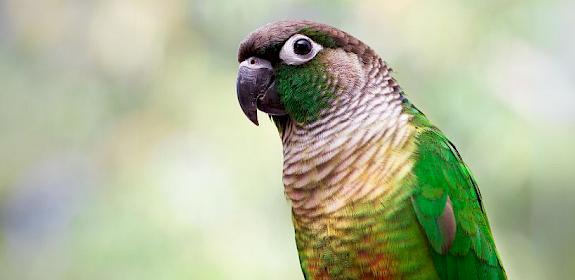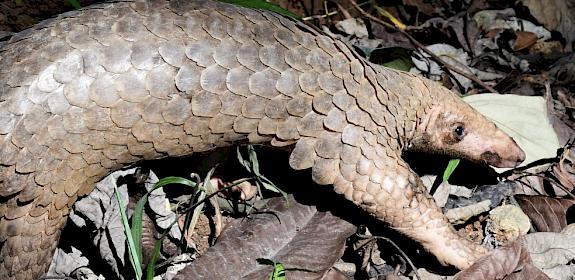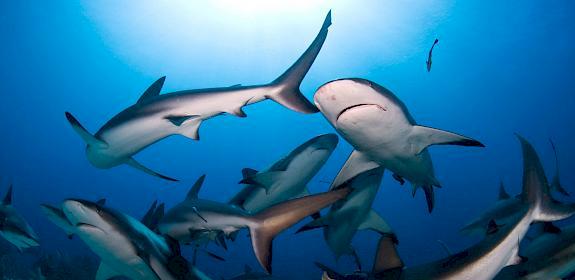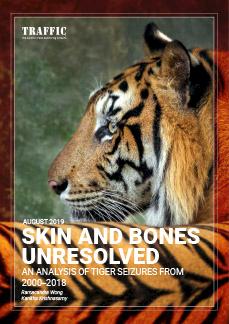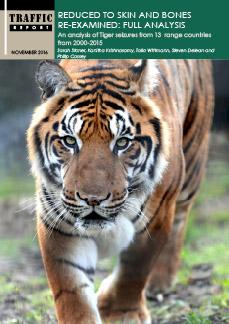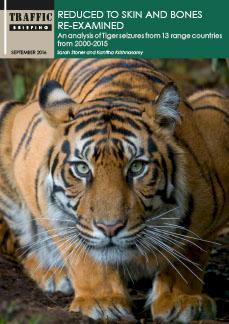
An urgent need to understand and address the interconnectedness and impacts of legal and illegal trade of different big cat species.
Big cat species are found in the wild in Africa, Asia, and North and Latin America but are in decline across their range due to factors such as habitat loss and illegal trade. For example, although there are occasions where tigers are killed opportunistically or in retaliation for the loss of livestock, the vast majority are poached to fuel demand for products, particularly for Asian markets, including tiger bone, skins, claws, teeth, blood, and others. The poaching and illegal trade in tigers have been a decades-long unresolved problem, but the demand in Asia has also led to increasing pressure on other big cat species globally as an alternative to tiger products. Big cats that have been captive-bred are being sold commercially, even where prohibited by law or regulation. ‘Canned’ hunting of captive-bred big cats has also led to laundering where parts from hunted lions and other big cats are passed off as from tigers.
Where much of the previous focus on big cat trade in CITES has been on Asian big cats, concern has been raised in recent years over links with the trade of a variety of other big cats and the need to address the broader trade in big cat species. Discussions on establishing a CITES Big Cat Task Force originated from a proposal to transfer all African populations of Panthera leo from Appendix II to Appendix I submitted at the 17th meeting of the Conference of the Parties (CoP17, Johannesburg, 2016). While the proposal was withdrawn, negotiations did result in the adoption of a series of Decisions on African lions, including Decision 17.243, which, amongst other actions, directed the Standing Committee to establish a CITES Task Force on African lions, inviting the participation of all African lion range States, consumer states for lion parts and derivatives, and relevant enforcement bodies, including the members of the Task Force of the International Consortium on Combating Wildlife Crime (ICCWC).
At the First Meeting of Range States for the Joint CITES-CMS African Carnivores Initiative (ACI1; Bonn, November 2018), Decision 17.243 was discussed in detail, and the range States of African carnivores represented at ACI1 agreed that the “CITES Task Force on African lions” should be replaced by a CITES Task Force on big cats. Therefore, various Decisions at CoP 18 were adopted aimed to establish such a Task Force that would allow for better understanding trends and linkages between trade in different big cat species and the actions needed to address this trade. CITES CoP19 will update these Decisions and discuss a terms of reference drafted for the Task Force.
The Terms of Reference highlight the need to identify, consider and propose best practices to prevent and detect attempts to launder illegal specimens through legal trade, including trade originating from captive-bred sources, an improved understanding of trade in specimens originating from captive-bred sources and the potential linkage with the laundering of illegal specimens from and through such facilities is identified as an outcome for the Task Force. However, the issue of captive breeding may require much greater attention in the Task Force's deliberations, including the broader issue of actions that need to be considered when reviewing national management practices and controls that are in place for facilities keeping Asian big cats in captivity. In this regard, consideration should be given to guidance that can be developed on the operation of such facilities and the trade of captive-born and bred live tigers and their parts and derivatives.
While the emphasis of the Terms of Reference is on addressing illegal trade, the Task Force would also need to take into account the complexity of issues surrounding trade in big cats, including complications where a legal trade regime exists. It is hoped that the work of the Task Force, as well as relevant future research, will help illuminate any linkages between the legal and illegal trade in big cat specimens so that any contradictions in existing policies governing the two issues can be resolved.
The Terms of Reference refer to time-bound recommendations as one of its outputs. For these recommendations to be effective, it is also important that, where appropriate, they are country-specific to ensure that actions are not only timely but targeted at where problems exist. This will also help the Task Force determine where support to range States is most needed. It is also important that these recommendations inform and support other relevant CITES processes and species-specific Resolutions, as well as species-specific Decisions that may be adopted by CoP19.
Frequent mention is made in the Terms of Reference to findings of available verified and validated studies to help inform the deliberations of the Task Force. A stated outcome in the Terms of Reference is a better understanding of the status, scale, and dynamics of illegal trade for different big cat species; illegal trade dynamics to inform demand reduction; the role of legal trade in big cat specimens; the impact of legal domestic markets trade; and the trade in specimens originating from captive-bred sources. It is important that this information generated by the work of the Task Force (with the exception of enforcement-related intelligence and other sensitive information) be made publicly available so that it can be used by other Parties and relevant organisations involved in tackling the illegal trade in big cat species.
It is unfortunate that the pandemic has delayed the timely implementation of the original Decisions from CoP18, particularly given the urgency of addressing illegal trade problems being faced by the species involved. It is, therefore, important that every opportunity be taken to ensure that the work of the Task Force is implemented as quickly as possible and that implementation is regularly monitored prior to the next meeting of the Conference of the Parties. While one of the Decisions for CoP19 directs the Secretariat to report the findings and recommendations of the Task Force to the 77th meeting of the Standing Committee for its consideration, it is important that the Task Force should report to all meetings of the Standing Committee prior to CITES CoP20.

